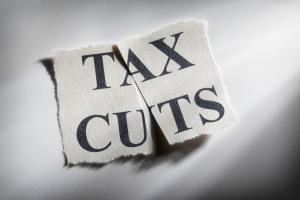
How to Make the Most of Your Tax Cuts
Tax cuts can have a significant impact on the economy and the financial well-being of individuals. For a country like Australia, cutting tax rates can provide numerous benefits, from stimulating economic growth to increasing disposable income for households. The Stage III Cuts The federal government announced earlier this year a new round of tax cuts aimed at providing financial relief to individuals and businesses. Going effective on 1 July 2024, the so-called Stage III measures are designed to support economic recovery in the wake of global economic challenges and to ensure that Australians can enjoy greater financial security. The measures are defined under the Treasury Laws Amendment (Cost of Living Tax Cuts) Act 2024 and the Treasury Laws Amendment (Cost of Living – Medicare Levy) Act 2024. Both bills were approved on 5 March 2024. Federal Treasurer Jim Chalmers expressed optimism of the tax cuts being able to help the general public’s coffers in ways unthinkable under the previous administration. New tax brackets The above Acts laid down a new set of tax brackets to cover all 13.6 million taxpayers in Australia. Under the measures, the current 19 per cent tax rate is trimmed to 16 per cent while the current 32.5 per cent tax rate is shaved down to 30 per cent. Increased Tax-Free Threshold The tax-free threshold has been raised, allowing low-income earners to retain more of their income and reducing the tax burden on the most vulnerable. People earning up to $18,200 a year are still tax-exempt under the new matrix, the above-mentioned 16 per cent rate applies to taxpayers earning $18,001 to $45k a year and 30 per cent is for taxpayers earning between $45,001 to $135,000. For thresholds above where the 37 per cent tax rate applies, the $120,000 limit is going up to $135,000. When it comes to the threshold above which a 45 per cent rate is applicable, it is now at $190,000 up from $180,000. The changes in tax rates will also affect the senior Australian and pensioner tax offset (SAPTO) thresholds. Single people can stand to have a $2,230 offset but their shade-out threshold is at $34,919 and the cutout at $52,759. The partners in a legal union can each have a $1,602 offset, $30,994 shade-out, and $43,810 cut-out. However, partners in a legal union but are separated by illness can have an offset of as much as $2,040, with the shade-out at $33,732 and the cutout at $50,052. The projected savings will be reflected for FY25. For example, if a certain professional earns $90k a year, the Stage III cuts will enable them to save as much as $1,929. Medicare Levy The Treasury Laws Amendment (Cost of Living – Medicare Levy) Act 2024 has its own set of perks. The current two per cent levy will not apply to people earning under $26,000 a year, but it will fully apply on incomes above $32,500; incomes coming in between will have partial levies. Make the Most of Tax Cuts Tax cuts offer a valuable opportunity to improve your financial situation. Here are some tips to help you take full advantage of the latest tax relief measures: Review Your Budget With extra disposable income from tax cuts, it’s a good time to review and adjust your budget. Identify areas where you can allocate the additional funds to enhance your financial stability, such as paying off debt or increasing savings. Increase Your Savings Consider putting a portion of your tax savings into a high-interest savings account or an investment account. Building a robust savings fund can provide financial security and help you achieve long-term goals. Invest in Education Use the additional funds to invest in your education or professional development. Taking courses or obtaining certifications can improve your skills and increase your earning potential. Pay Down Debt If you have high-interest debt, such as credit card balances or personal loans, use your tax savings to pay down these liabilities. Reducing debt can improve your financial health and free up more money for future needs. Upgrade Your Home Consider using tax relief to make home improvements or energy-efficient upgrades. These investments can enhance your living environment and potentially increase the value of your property. Boost Retirement Savings Increase contributions to your superannuation fund. Additional contributions can grow over time, providing a more comfortable retirement. Support Local Businesses Spend some of your tax savings at local businesses. This not only supports the economy but also helps sustain the community and create local jobs. Explore Investment Opportunities With extra funds, consider exploring various investment opportunities such as stocks, bonds, or real estate. They can help you earn passive income in due time, but may require monitoring Donate to Charity Use a portion of your tax savings to support charitable organisations. Not only does this help those in need, but donations can also be tax-deductible, providing additional financial benefits. Plan for Major Expenses If you have upcoming major expenses, such as a wedding, a new car, or a family vacation, use your tax savings to plan and budget for these events. This can reduce financial stress and ensure you enjoy these milestones without incurring debt. The Bottom Line Tax cuts can be a blessing, providing significant benefits to both individuals and the broader economy. The Stage III tax cuts in Australia aim to stimulate economic growth, boost disposable income, and encourage investment. By taking proactive steps to make the most of tax relief, Australians can enhance their financial security and contribute to a more robust and resilient economy. Whether it’s increasing savings, investing in education, or supporting local businesses, the opportunities provided by tax cuts can lead to greater financial wellness and a brighter future. DISCLAIMER: This article is for informational purposes only and does not reflect official tax advice. 2 Ezi is not affiliated with the Federal Government and its associated agencies or employees. Please consult your tax agent and financial advisor.






